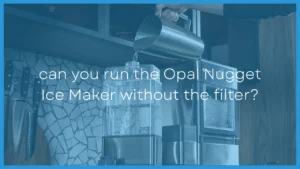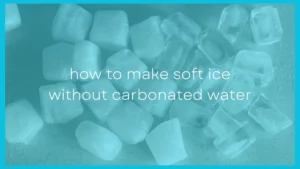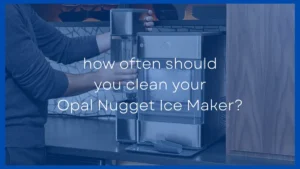If you use a silicone ice cube tray you may notice that after a few (or of a lot of) uses that a white residue seems to develop on the tray. This may have you worried and like me you may be curious as to what exactly the white residue on silicone ice cube trays is, whether it's harmful or not and how you can get rid of it?
The white residue that develops on silicone ice cube trays is usually Calcium Sulfate, which is a mineral found in water. This mineral sticks to the silicone creating a white residue. Calcium Sulfate is not harmful and it can be removed by washing the trays in vinegar.
To avoid this white residue filter or soften your water before making ice to remove the minerals from the water.
Silicone ice cube trays have increased in popularity over the last few years. They are an alternative to plastic and they also allow you to create ice cubes in many different shapes and sizes. Some of the best large ice cube trays are made from silicone and plastic is more likely to break when making large ice cubes.
The tendency for silicone ice cube trays to have this type of build-up has been a source of concern for many people over a long period. Thankfully, we know what causes this and it isn't harmful.
Why Silicone Ice Cube Trays Have White Residue And How To Fix It
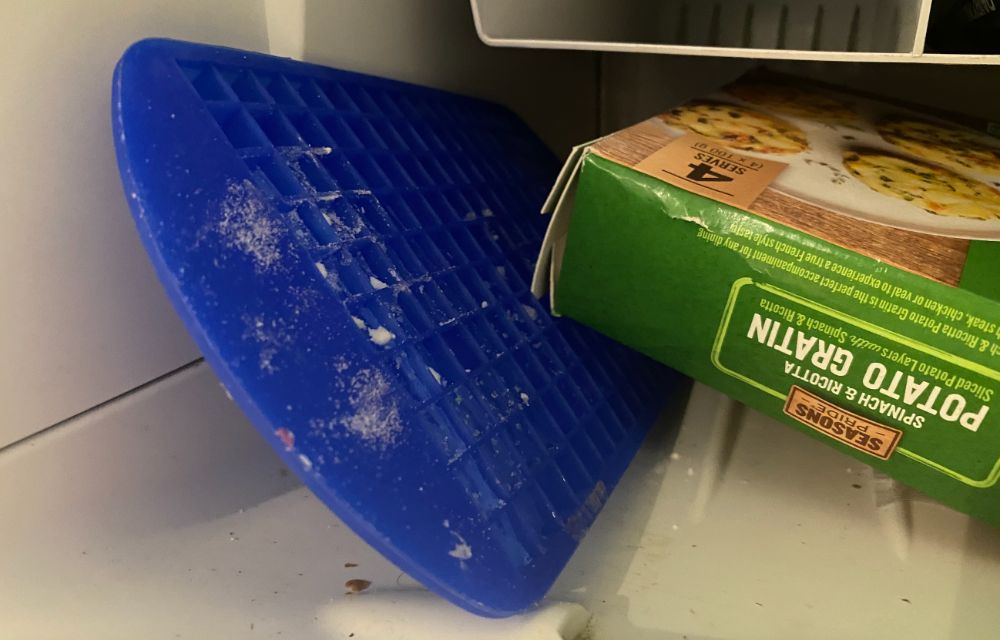
It doesn't happen with everyone but it is a very common occurrence for silicone ice cube trays to end up with a white residue after they have been used a few times. This is especially common in areas with “hard water” or water containing lots of minerals.
It turns out that the white residue left behind on silicone ice trays results is created by Calcium Sulfate, one of the chemicals present in water. There are also other naturally occurring minerals like Magnesium Sulfate which can leave a white residue on your silicone ice cube trays.
The presence of minerals such as Calcium Sulfate is far higher in areas with harder water. This occurs when water picks up minerals from rocks and soils before entering rivers and streams where it is ultimately collected and sent to your home.
The harder the water in your home the larger the amount of residue left behind on the surface of your silicone ice trays. The calcification of the minerals leaves a residue on the surface of the silicone
This residue is transferred onto the next ice cubes made in the tray.
Calcium Sulphate doesn't dissolve easily and so this can leave to white flakes in your ice cubes and ultimately in your drink.
As a result, you might see traces of the residue in your drink.
Is The White Residue In Ice Cube Trays Dangerous or Safe to Consume?
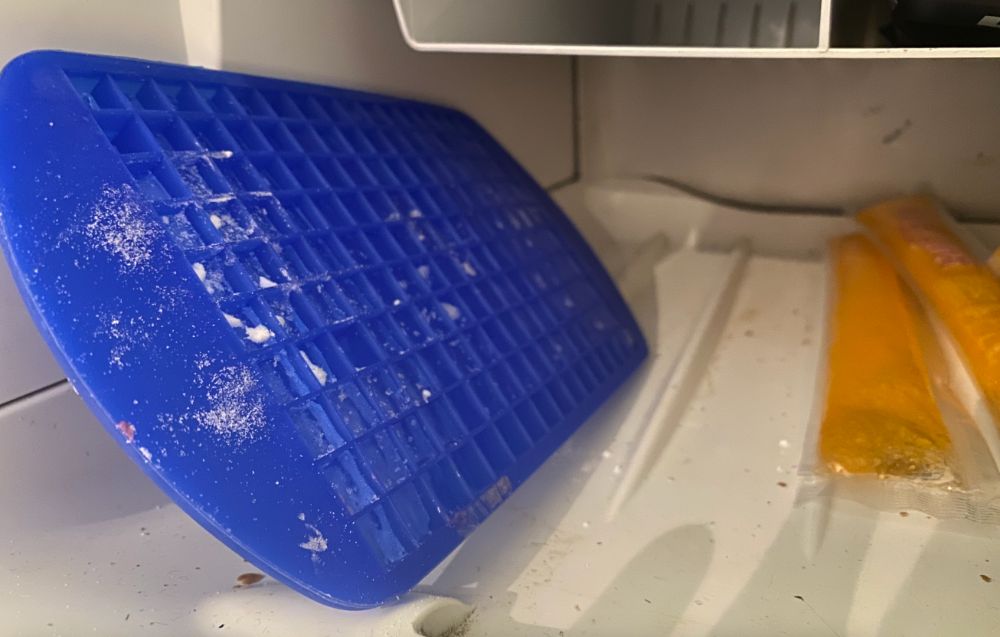
The white residue that you find in silicone ice cube trays is Calcium Sulphate and other minerals naturally found in water. There is no cause for concern in terms of adverse health effects and it is safe to consume.
However, it can have a negative effect on the taste and smell of the drink in which the ice is used. It can also leave floating white specs in your drink as Calcium Sulphate doesn't dissolve in water easily.
Trace amounts of Calcium Sulfate such as this are not harmful to humans.
Cloudy ice in general is safe to consume as long as the water used to make the ice is high quality. Ice is white is the middle because of trapped air bubbles or because of minerals like the Calcium Sulphate that leaves the white residue on your silicone ice cube trays.
However, there are a few ways the residue can be removed to ensure it does not negatively affect your drinks' aesthetics, taste, and smell while making your guests question whether your dishwashing capabilities are up to standard.
These methods include a mixture of vinegar and water, baking the silicone tray, and a few other ideas that have received mixed reviews.
Other than the Calcium Sulfate deposits, it’s also possible that the residue on your silicone ice trays is caused by limescale. Another possible cause is the dishwashing liquid that you use. However, this is relatively unlikely compared to something like Calcium Sulfate deposits.
Why Do Silicone Ice Cube Trays Get White Residue But Plastic Trays Don’t?
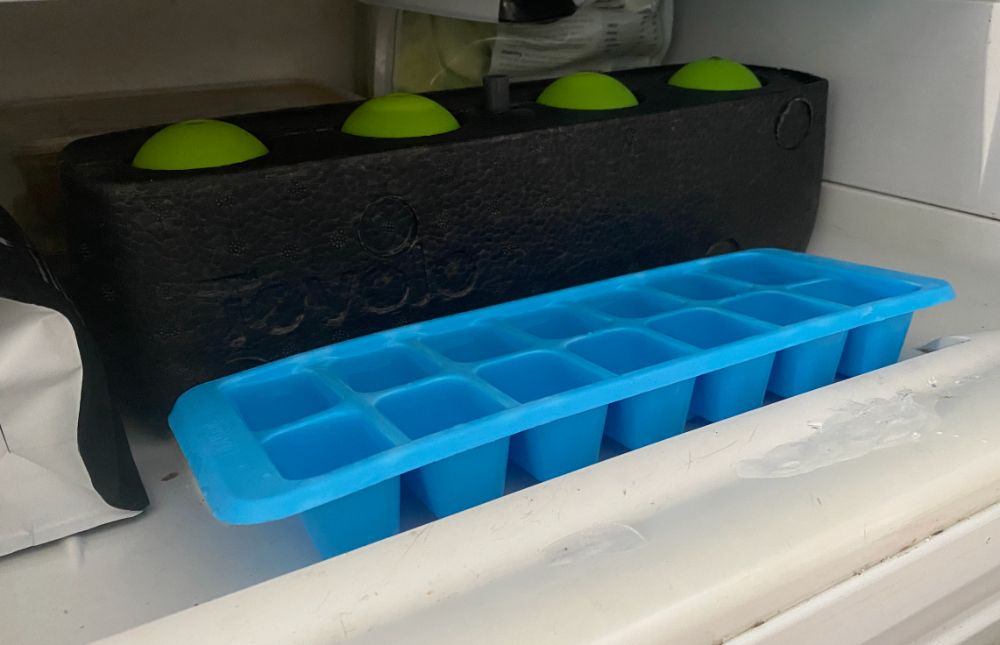
The residue associated with silicone ice trays doesn't seem to be prevalent among plastic ice trays. This might confuse some and make them wonder whether the silicone ice trays are even safe to use.
Conclusive evidence is at a minimum, but it would seem that the answer lies in the chemical composition of the silicone itself. Silicone, as a substance, tends to hold onto mineral deposits more than plastic. The same can be said for the smells associated with the deposits mentioned above.
Silicone tends to hold onto some smells just as easily. Water can absorb tastes and odors from your freezer and this can cause your ice to taste bad even if the water is fine. These tastes and odors can also get stuck on the silicone ice cube trays, which is why they require regular washing.
At an elementary level, it would seem that silicone is simply stickier when it comes to holding onto certain types of molecules. Because of its inherent stickiness, solids tend to adhere to silicone more than other substances.
Easy release plastic ice cube trays don't seem to have this problem as badly so you may want to consider buying one of them instead of using silicone trays. The benefit of these is that it's also much easier to get the ice out of the tray.
Resultantly, the minerals from the water and food molecules that find their way near silicone will generally land on the material and remain on its surface indefinitely unless you do some work to clean it off.
How To Stop White Residue on Silicone Ice Cube Trays
There are several ways to prevent the build-up of white residue on your silicone ice cube trays. Some are more drastic than others, and the best method will depend on your individual circumstances.
Distill Your Water Before Making Ice
Generally speaking, harder water will have higher levels of minerals. As a result, the harder the water, the more likely your silicone ice trays are to develop the waxy white residue.
The best way to remove this build up of residue is to remove the minerals from the water before you make the ice. If you calcium sulphate is in the water then it can't be left behind on your ice cube trays.
Boiling your water alone won't remove the minerals from the water but distilling your water (boiling the water and trapping the steam in a different container) can remove 99%+ of dissolved minerals as the minerals are left behind.
You can distill water at home using a boiling pot of water with a floating bowl inside and a lid upside down to get the steam to condensate. We talk about this in our article on using distilled water to make clear ice cubes. However, this is time and energy consuming and doesn't yield a lot of water.
You can invest in an affordable water distiller (Amazon) that is simple to use and does a great job distilling water and giving you water that is almost completely mineral free.
There are lots of different models available at Amazon and they range in price from extremely expensive to affordable. Make sure you look at reviews and find one that is highly rated and quality does vary a lot.
The water distiller below is extremely highly rated with thousands of views and it's one of the cheaper models out there. Check it out if you're interested in getting a water distilled for your ice cubes.
See the latest price of the Mophorn Water Distiller at Amazon
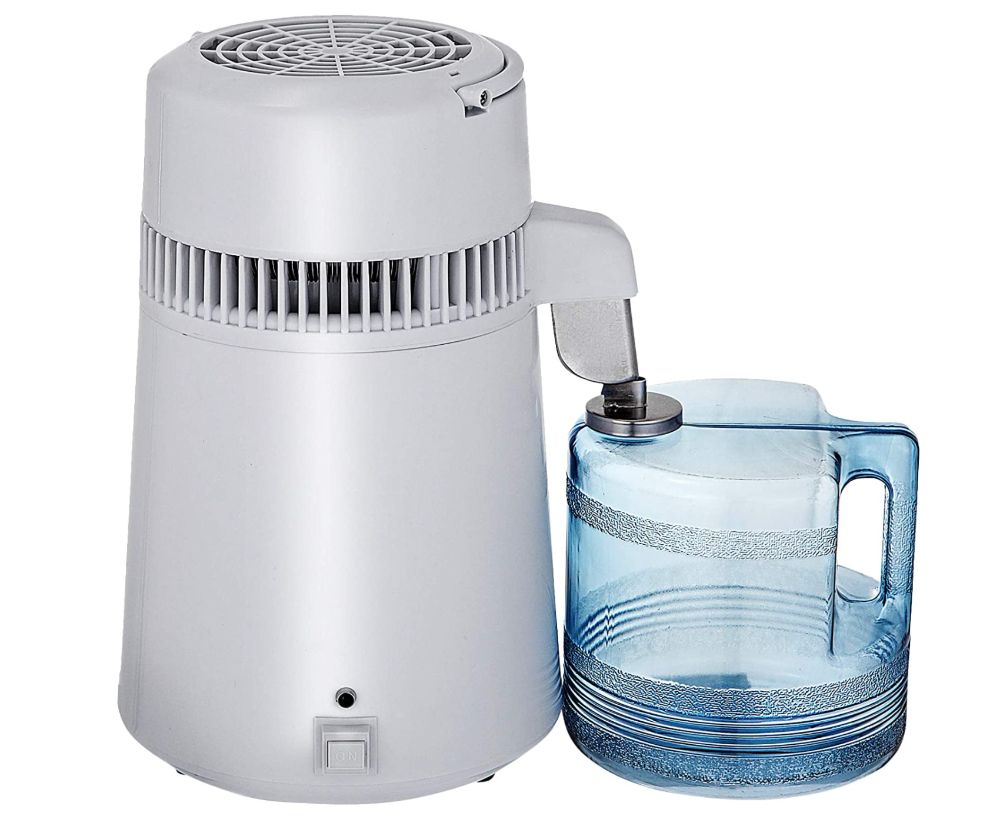
Soften Your Water Using An Ion Exchange Filter
Besides distilling your water before making ice, several other water-softening methods might suit your individual circumstances.
Ion exchange filters are highly effective at softening water. These can be attached to the faucets or installed under your sink.
There are also some pitchers that you refill manually but these are rarer.
NOTE: Brita filters and basic water filters use carbon filtrations systems that remove heavy metals and chlorine but do NOT remove the salts dissolved in the water. So they do not soften water. This is why you need an ion exchange filter.
See ion exchange filter options at Amazon
Use Stainless Steel Ice Trays
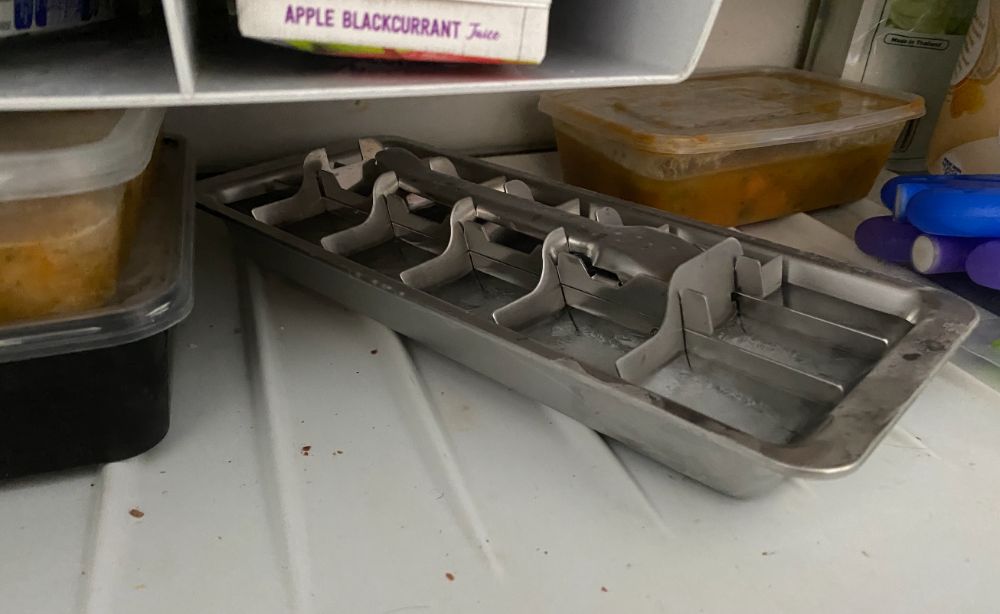
Like plastic ice trays, stainless steel ice trays are less likely to accumulate the aforementioned residue associated with silicon ice trays. It may be the simplest solution to simply change the ice tray you are using.
Another benefit of stainless steel ice cube trays is that they are eco friendly and you can avoid all plastic. See my list of the best eco friendly ice cube trays.
I've personally got a stainless steel ice cube tray and I love using it. It makes larger than average ice cubes, it looks great and it's so good knowing I'm not making ice with plastic. You can grab one like mine from Amazon using my affiliate link below:
See the latest price of EcoZoi Stainless Steel Ice Cube Tray at Amazon
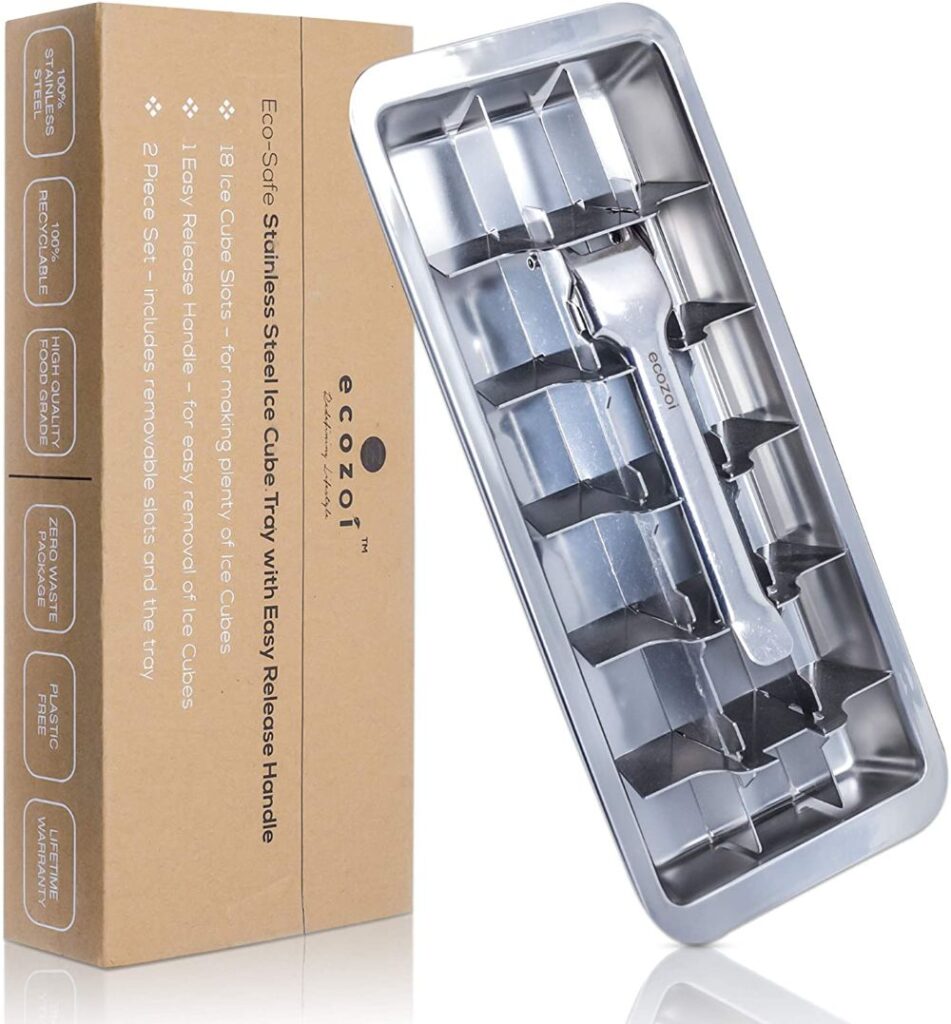
How To Clean White Residue Off Silicone Ice Cube Trays
If you've got white residue on your silicone ice cube trays how do you get it off?
The internet is full of supposed “solutions” to the problem of white residue on silicone ice trays. Some of them are completely ineffective, while others are highly effective.
Unfortunately, removing the deposited calcium sulphate does require some work and it isn't as easy as putting it in the dishwasher.
Vinegar & Water Mixture
The most highly recommended method of cleaning the white residue from your silicon ice trays is to use a mixture of vinegar and water. Dilute the vinegar in a ratio of 1:1. Next, soak the silicone ice trays in the solution of hot or warm water at least twenty minutes.
After soaking, remove the trays from the water solution, and give them a solid scrub and thorough rinse. This should remove the majority of the white residue.
The scrubbing is important as calcium sulphate is extremely hard to dissolve so you need to scrub it away.
This is not a permanent solution, and you will most likely have to repeat the process periodically to ensure the trays remain residue-free.
Bake Your Silicone Ice Trays
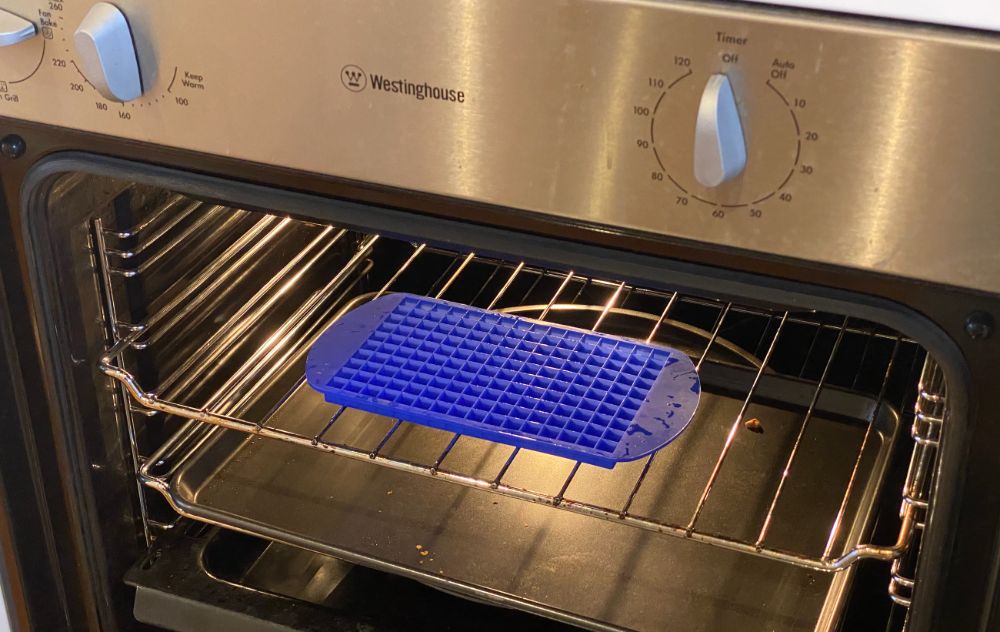
This is a great ice cube tray hack to remove bad smells and odors for your silicone ice cubes trays but it could water for white residue also.
Simply place the trays in an oven at 150ºC/300ºF for thirty to sixty minutes, allow them to cool, and wash them thoroughly.
Conclusion
While you know now that the white residue left on your silicone ice trays is harmless to your health, it will undoubtedly affect your favorite drink's aesthetics, smell, and taste.
If you have had your silicone ice trays for a while, and cleaning them is no longer working, it may be time to retire the trays and purchase some new ones.


